IRS Provides Guidance for “Beginning of Construction” for Applicable Wind and Solar Facilities (Notice 2025-42)
The IRS has provided guidance regarding what is considered “beginning of constructions” for purposes of the termination of the Code Sec. 45Y clean electricity production credit and the Code Sec. 48E clean electricity investment credit. The One Big Beautiful Bill (OBBB) Act (P.L. 119-21) terminated the Code Secs. 45Y and 48E credits for applicable wind and solar facilities placed in service after December 31, 2027. The termination applies to facilities the construction of which begins after July 4, 2026. On July 7, 2025, the president issue Executive Order 14315, Ending Market Distorting Subsidies for Unreliable, Foreign-Controlled Energy Sources, 90 F.R. 30821, which directed the Treasury Department to take actions necessary to enforce these termination provisions within 45 days of enactment of the OBBB Act.
Physical Work Test
In order to begin construction, taxpayers must satisfy a “Physical Work Test,” which requires the performance of physical work of a significant nature. This is a fact based test that focuses on the nature of the work, not the cost. The notice addresses both on-site and off-site activities. It also provides specific lists of activities that are to be considered work of a physical nature for both solar and wind facilities. Preliminary activities or work that is either in existing inventory or is normally held in inventory are not considered physical work of a significant nature.
Continuity Requirement
The Physical Work Test also requires that a taxpayer maintain a continuous program of construction on the applicable wind or solar facility, the Continuity Requirement. To satisfy the Continuity Requirement, the taxpayer must maintain a continuous program of construction, meaning continuous physical work of a significant nature. However, the notice provides a list of allowable “excusable disruptions,” including delays related to permitting, weather, and acquiring equipment, among others.
The guidance also provides a safe harbor for the Continuity Requirement. Under the safe harbor, the Continuity Requirement will be met if a taxpayer places an applicable wind or solar facility in service by the end of a calendar year that is no more than four calendar years after the calendar year during which construction of the applicable wind or solar facility began. Thus, if construction begins on an applicable wind or solar facility on October 1, 2025, the applicable wind or solar facility must be placed in service before January 1, 2030, for the safe harbor to apply.
Five Percent Safe Harbor for Low Output Solar Facilities
A safe harbor is available for a low output solar facility, which is defined as an applicable solar facility that has maximum net output of not greater than 1.5 megawatt. A low output solar facility may also establish that construction has begun before July 5, 2026, by satisfying the Five Percent Safe Harbor (as described in section 2.02(2)(ii) of Notice 2022-61).
Additional Guidance
The notice provides additional guidance regarding: construction produced for the taxpayer by another party under a binding written contract; the definition of a qualified facility; the definition of property integral to the applicable wind or solar facility; the application of the 80/20 rule to retrofitted applicable wind or solar facilities under Reg. §§ 1.45Y-4(d) and 1.48E-4(c); and the transfer of an applicable wind or solar facility.
Effective Date
Notice 2025-42 is effective for applicable wind and solar facilities for which the construction begins after September 1, 2025.
Notice 2025-42



